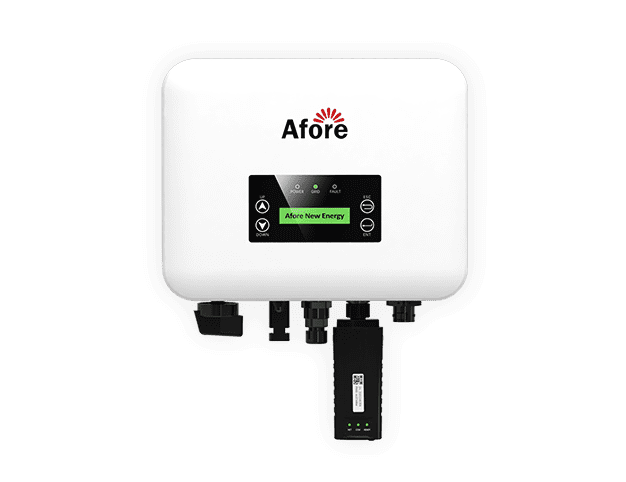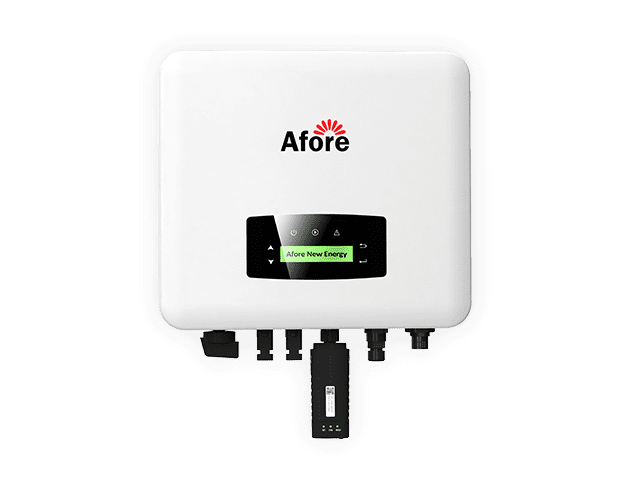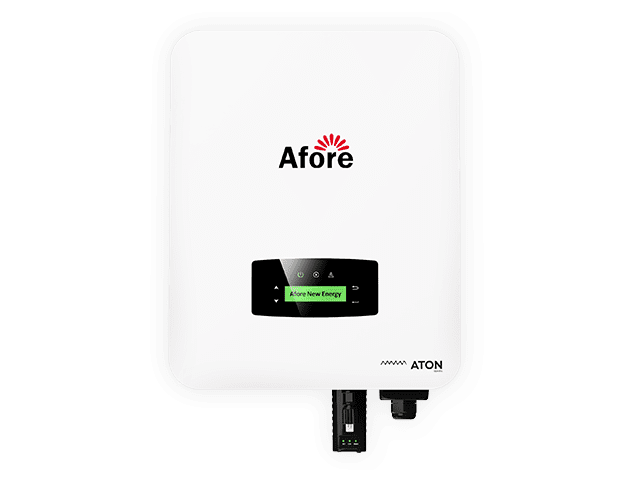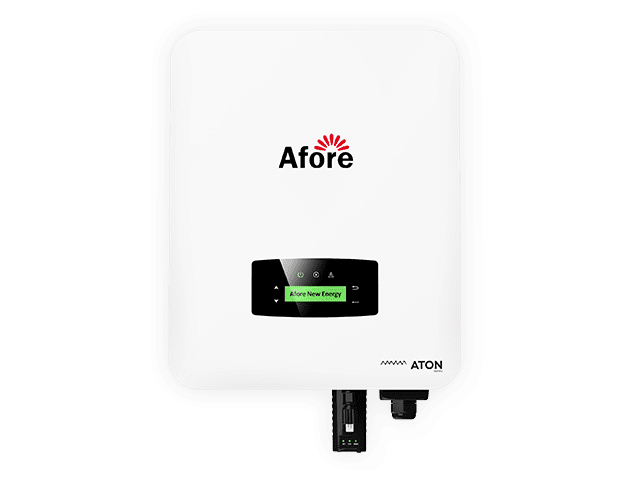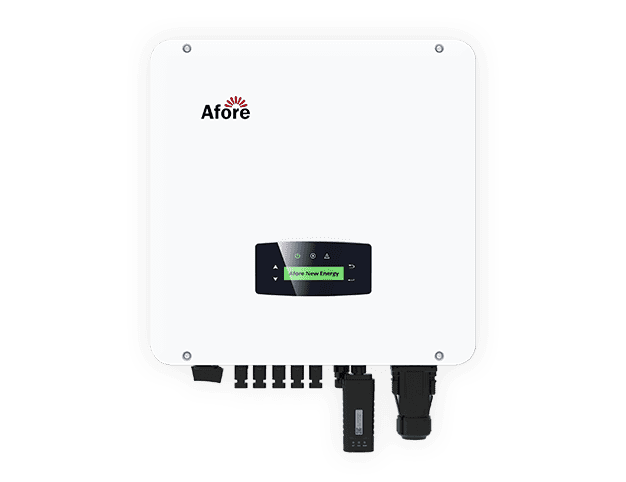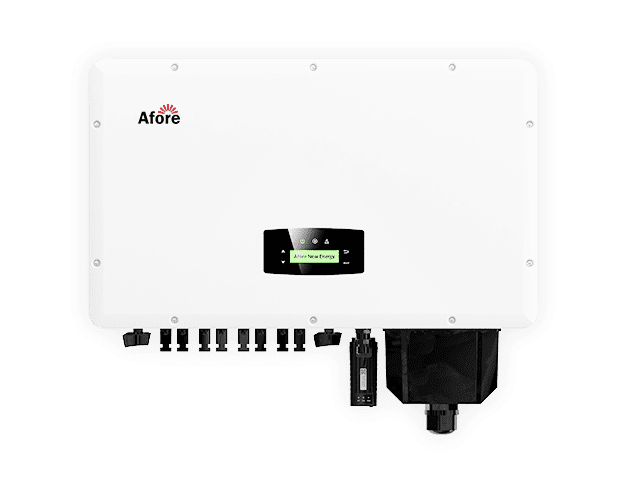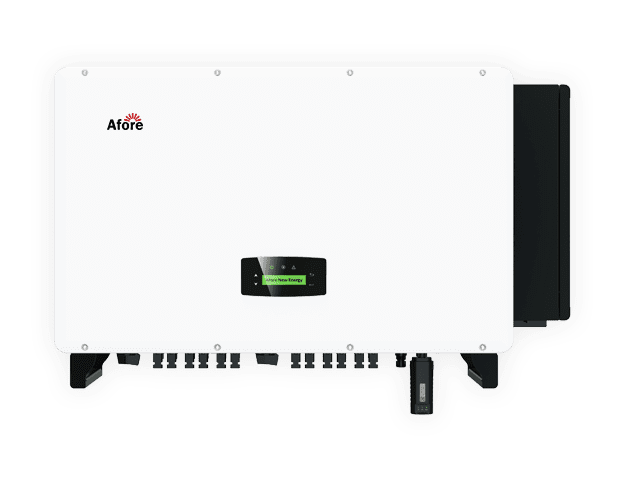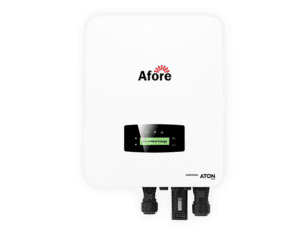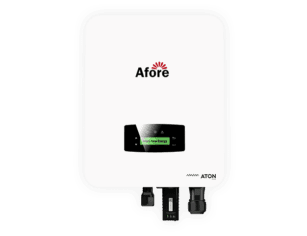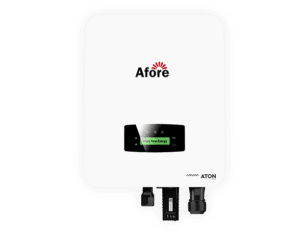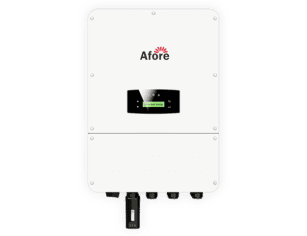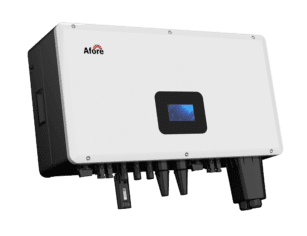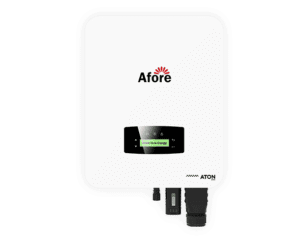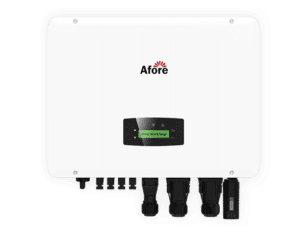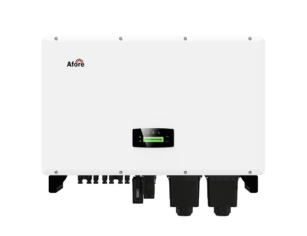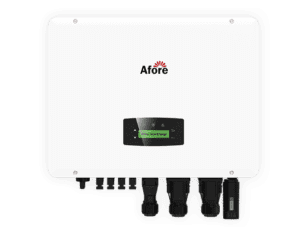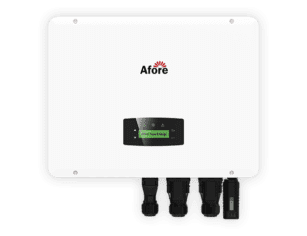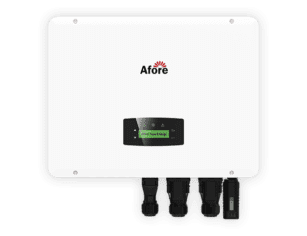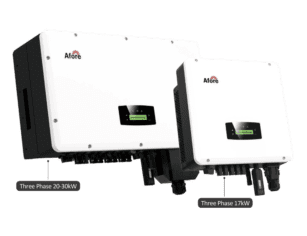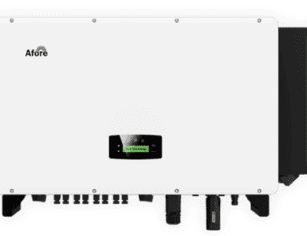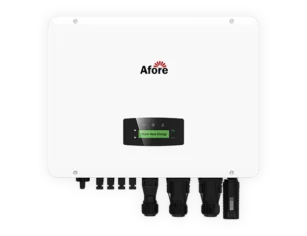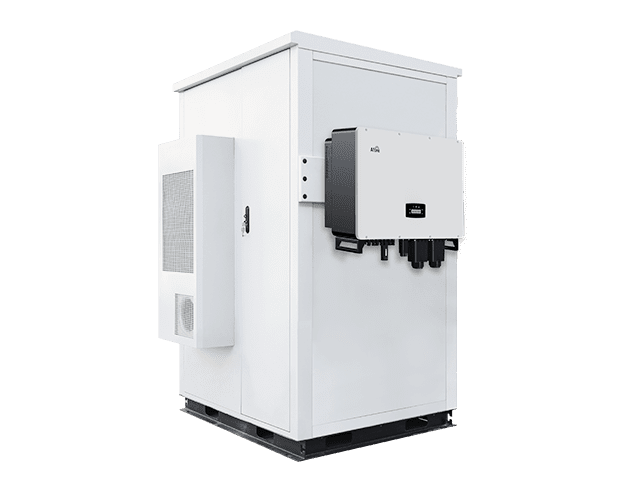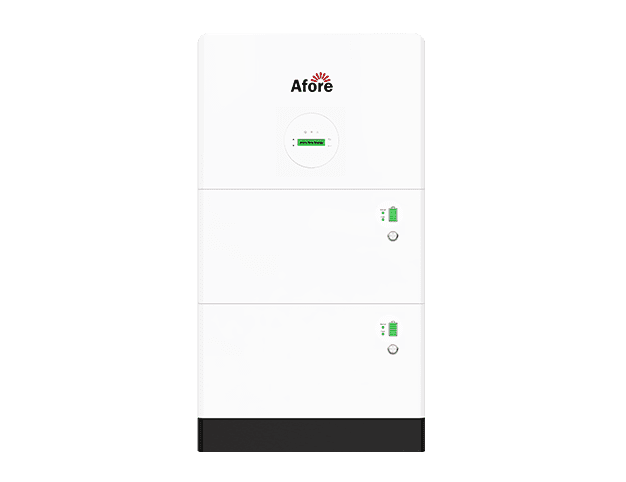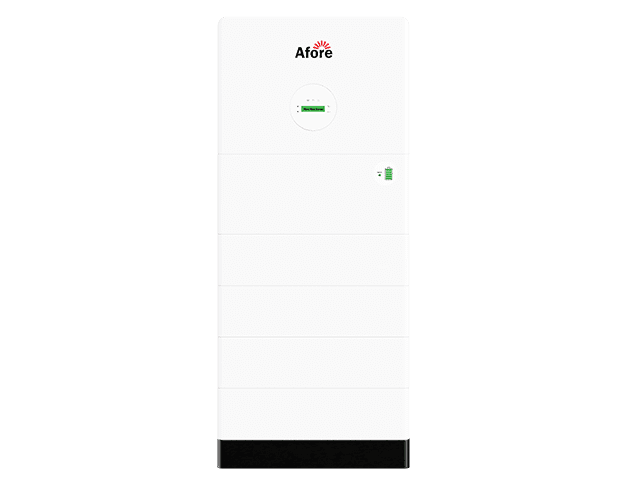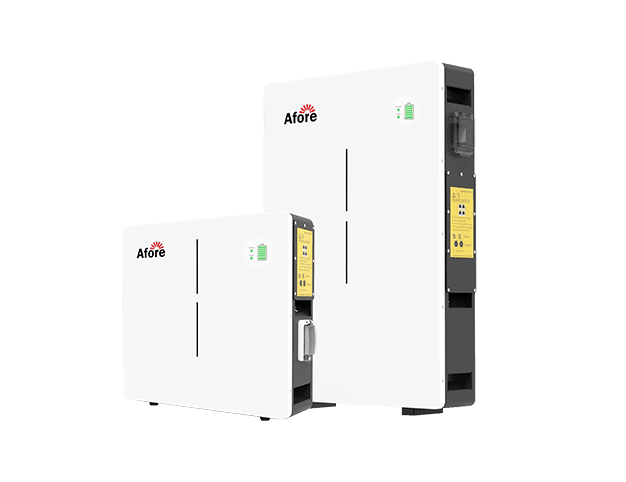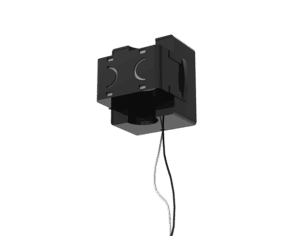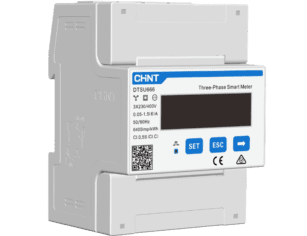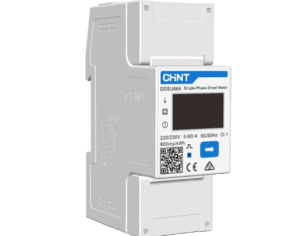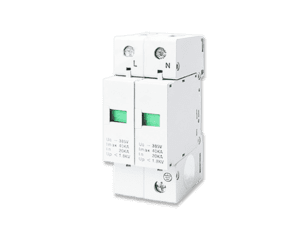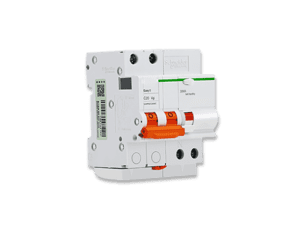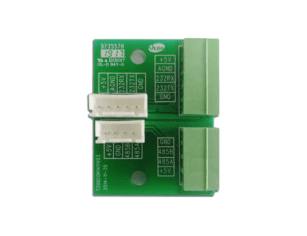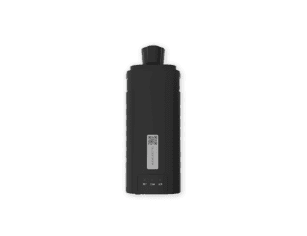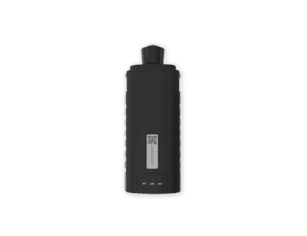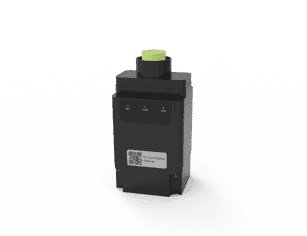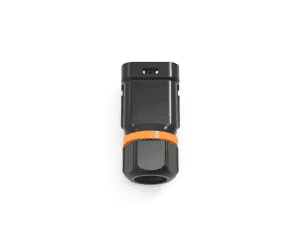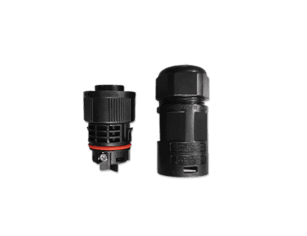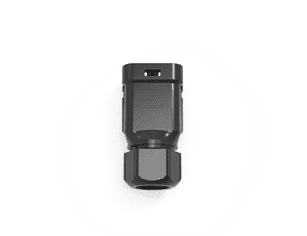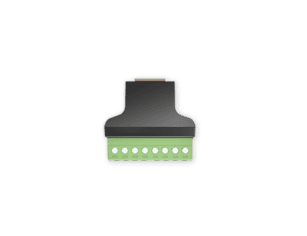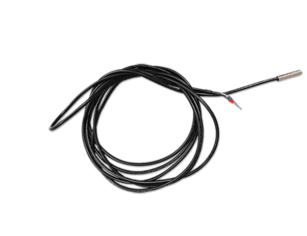2000 Watt Amp: The Ultimate Guide to Power Inverters and Their Applications
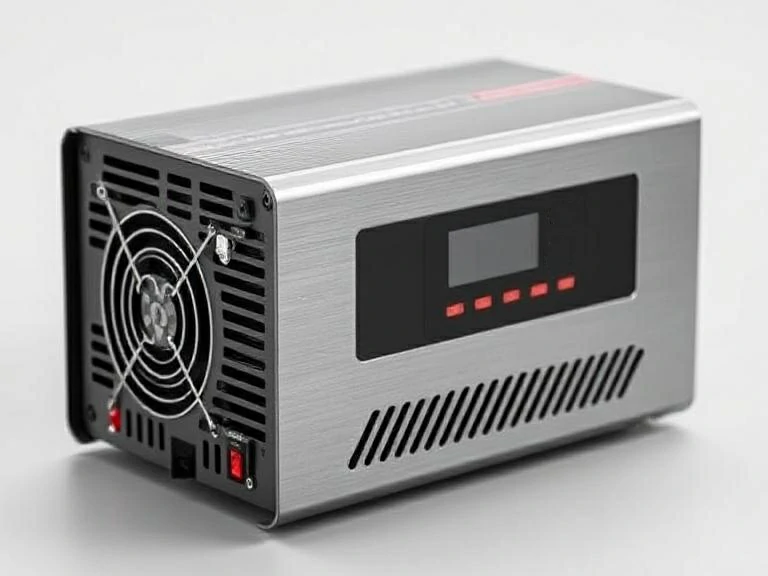
Table of Contents
The first thing that comes to mind when you hear “2000 watt amp” is probably a powerful sound system or a heavy-duty inverter that keeps appliances running during a power outage. But 2000 watt amps can be used for so much more. Whether you want to run your refrigerator, turn on the TV during a camping trip, or install emergency backup power in your home, it’s important to understand how a 2000 watt amp works and what it can handle.
In this guide, we’re going to talk about this 2000 watt amp. From the little technical details of it, to how it actually works, it’s all going to be revealed. Plus, we’ve got so many real-world application examples so you can visualize it even more. Come along and explore in depth!
Understanding the Basics of a 2000 Watt Amp
Understanding what a 2000 watt amp means can help you make smarter, more efficient decisions.
What Does a 2000 Watt Amp Actually Mean?
In essence, a 2000 watt amp is a device (usually an amplifier or inverter) can output or process up to 2000 watts of power.
From a practical point of view, 2000 watts of power is quite impressive. It’s enough to easily run a variety of household appliances, small power tools and entertainment systems.
Right now, depending on the circumstances, when people refer to a “2000 watt amp”, they may be referring to it:
- Audio amplifiers (for booming subwoofers or high-powered speakers)
- Power inverters (converting battery or solar energy into usable AC power)
Although the term can be a bit confusing across industries, it means the same thing at its core, which is to handle 2,000 watts of power. Think of it like a master key; although the locks come in different shapes, the principle of opening them is the same.
Breaking Down Watts, Volts, and Amps
It’s impossible to talk about a 2000 watt amp without touching on the holy trinity of electricity: watts, volts, and amps. Here’s a quick refresher:
- Watts (W): Measure the total power being used.
- Volts (V): Measure the force or pressure of electricity.
- Amps (A): Measure the flow rate of electricity.
They are simply related to each other and can be expressed by this equation:
- Amps = Watts ÷ Volts
So, for a power inverter 2000 watt operating on a typical 120V system:
- 2000 ÷ 120 = 16.67 amps
On a 240V system:
- 2000 ÷ 240 = 8.33 amps
This formula really comes in handy when you’re figuring out battery pack sizes, setting up your wiring, or just trying to see how many devices your inverter can handle at once.
This also helps us to know why some devices suddenly go on “strike” or just shut down – frankly speaking, the voltage and current may not match each other.
Difference Between a 2000 Watt Amplifier and a 2000 Watt Power Inverter
Here’s where things get a bit tricky — but stick with me.
- 2000 watt amps are primarily used to amplify sound signals. It usually transfers a large amount of power to a subwoofer or a high-output speaker system. It can cope with rapidly changing demands, especially in bass-heavy music.
- A power inverter 2000w, on the other hand, focuses on electricity conversion. It transforms direct current (DC) from a battery (like the one in your car, RV, or solar setup) into alternating current (AC) — the type that powers your home electronics.
Even though both devices are engineered to manage 2000 watts, they do so in fundamentally different ways.
Why 2000 Watts Is a Popular Size
You may wonder, “Why 2000 watts? Why not 1500 or 3000 watts?” Here’s why 2000 watt amps are at their best:
- Versatility: Powerful enough to run critical appliances like refrigerators, TVs, and microwaves without being so large that it’s overkill.
- Portability: Especially in the inverter world, 2000 watt units are still reasonably sized and easy to install.
- Efficiency: Many devices that homeowners and RVers need fall comfortably within the 2000 watt power envelope.
- Affordability: Compared to much larger inverters or amplifiers, a power inverter 2000w balances price and performance nicely.
For example, in a typical home backup situation, a 2000 watts amp can easily run your lights, a small fridge, your Wi-Fi router, and a few chargers — keeping you comfortable even when the grid goes down.

What Can You Run with a 2000 Watt Amp?
If you already have a 2000 watt amp on hand, or are planning to add such a gem, your mind may be wondering, “What on earth can this thing do?” In fact, 2000 watt amp, that use can be quite a lot, whether it is to add color to the sound system, or as a backup power emergency, or even off-grid adventure energy station, it can come in handy. We might as well through a few practical application scenarios, to really feel the power of 2000 watt amp it!
Household Appliances
A power inverter 2000w is quite simply the ideal companion when the power goes out or off the grid, easily keeping your household appliances up and running. Here’s a rough idea of what you can power:
- Refrigerator (typically around 100–800 watts, depending on size and efficiency)
- Microwave (800–1200 watts)
- Coffee Maker (600–1200 watts)
- TV (100–400 watts)
- Laptop Chargers (50–100 watts)
- Lighting Systems (LED lights are very efficient, usually 10–50 watts each)
Example:
You could run a small fridge (700W), a few LED lights (100W total), and still have room to power your laptop and router — all at once — with a power inverter 2000 watt.
But always remember: you should keep the total wattage below 2000 watts to avoid overloading the unit if you start stacking it.
Recreational Vehicles (RV) and Camping Setups
In the case of RVers and campers, a 2000 watt amp is virtually a lifeline.
You can easily run:
- Small Air Conditioners (under 1000W startup, 500–800W running)
- Fans
- Portable Heaters (careful, some draw more than 1500W)
- Small Freezers
- CPAP Machines ( for those who need breathing support all night)
Pro Tip:
Air conditioners and heaters usually have a high starting wattage (sometimes double the running wattage), so if you’re planning to run these off your power inverter 2000w, make sure to account for the startup surge.
Audio Systems and Entertainment
If your goal is pure audio bliss, a 2000 watt amp can deliver some earth-shaking sound.
You can hook up:
- Massive subwoofers
- Multiple high-wattage speakers
- Amps for musical instruments or DJ setups
An amp 2000 watts in the car audio world, for instance, is ideal for competition-grade sound systems that need powerful, clean output without distortion.
Fun Fact:
Some users pair a power inverter 2000w with a 12V battery bank just to power mobile karaoke setups or outdoor movie nights!

Power Tools and Job Sites
A 2000 watt amp can power many essential tools for the contractor or DIY enthusiast:
- Electric Drills (600–1000 watts)
- Circular Saws (1200–1800 watts startup, less running)
- Small Air Compressors
- Worksite Lighting
Using a power inverter 2000 watt to run a mobile workshop? Absolutely doable — just plan your tool use wisely so you don’t overload the system during peak demand.
Critical Medical Devices
In emergency situations an inverter of 2000 watts can be a real lifesaver by supporting the following critical medical equipment:
- Oxygen Concentrators
- CPAP Machines
- Nebulizers
- Small Medical Refrigerators
Always double-check the specific wattage requirements for your medical gear. Some devices require very stable sine wave output, so opt for a pure sine wave inverter if needed.
Things You Probably Can’t Run
It’s just as important to know the limits of a 2000 watt amp. Here are some items that may push it too far:
- Large Central Air Conditioners (they often require 3000W+)
- Electric Water Heaters (1500–4000W)
- Full-Size Electric Ovens (2000–5000W)
- Large Industrial Equipment
Trying to run these devices on an amp 2000 watts setup would either overload the inverter or cause continuous tripping.
Real-Life Scenarios
The following are actual scenarios of different groups of people using a 2000 watt amp:
- Homeowners: Powering a mini-fridge, router, a few lights, and charging phones during a blackout.
- Campers: Watch TV in the field, charge your devices, power a fan, and maybe make a cup of coffee.
- Musicians: Running guitar amps, PA systems, and lighting at outdoor gigs using a power inverter 2000 watt setup.
- Truckers: Keeping mini-fridges, microwaves, and TVs running inside the cab.

Choosing the Right 2000 Watt Power Inverter
Picking the right 2000 watt amp or power inverter 2000 watt might seem overwhelming at first — there are so many models, features, and specs to consider.
Not to worry though – once you understand some of the basics, choosing the right 2000 watt amp becomes much easier.
Let’s dive into the key factors you should keep in mind.
Pure Sine Wave vs. Modified Sine Wave Inverters
On of the first decisions you will be faced with is choosing between a pure sine wave inverter and a modified sine wave inverter.
- Pure Sine Wave: This type of power inverter 2000w delivers electricity almost identical to your home’s utility power. It’s smooth, consistent, and perfect for sensitive electronics like laptops, medical equipment, and newer appliances. If you plan to run anything delicate or high-tech, go with a pure sine wave.
- Modified Sine Wave: These are cheaper and good enough for simple tools, older refrigerators, and basic lighting. However, they can cause problems such as humming in audio equipment and overheating in some devices. If you’re just powering a fan, lamp, or coffee maker, then a 2000-watt modified sine wave inverter may be sufficient.
Pro Tip: Always check your appliances first. Some won’t even turn on properly without a pure sine wave!
Input Voltage Compatibility
Another thing to match carefully: your inverter’s input voltage and your battery system.
- Most power inverter 2000w models are designed for 12V or 24V battery banks.
- For RVs, boats, or cars, 12V systems are the norm.
- For larger setups like off-grid cabins, you might prefer a 24V system — it’s more efficient over longer distances.
Getting this wrong can fry your inverter or your batteries — not fun! Always double-check that your amp 2000 watts setup matches your battery voltage.
Surge Capacity Matters
Did you know many appliances require a surge of extra power just to start up?
That’s why you need to consider the surge capacity of your power inverter 2000 watt.
Surge ratings typically allow a momentary boost — often 1.5x to 2x the rated wattage — to handle that initial kick.
Example:
- Your fridge might only use 700W running, but it could spike to 1400W at startup.
- A good 2000 watt amp might handle surges up to 4000 watts for a few seconds.
Bottom Line: Always check the peak surge rating if you plan to power items like fridges, pumps, or air conditioners.
Built-in Safety Features
Don’t skimp on safety — trust me, you’ll thank yourself later.
Look for these built-in protections in your power inverter 2000 watt:
- Overload Protection
- Over-temperature Shutdown
- Low Voltage Alarm and Shutdown
- Short Circuit Protection
- Ground Fault Protection

Portability and Installation Ease
Depending on how you plan to use your 2000 watts amp, size and portability might be a major factor.
- For RVs and Vans: Compact, lightweight models are a huge plus.
- For Home Systems: You might prioritize sturdiness and higher build quality over portability.
Some power inverter 2000 watt models come with mounting brackets for easy installation inside vehicles or on walls. Others are more plug-and-play with simple alligator clips or cigarette lighter adapters (though those usually support lower wattage).
Tip: If you’ll be moving it around a lot — say between your truck and your cabin — get one with sturdy handles and rugged casing.
Number and Type of Outlets
Not all power inverter 2000w units are built the same when it comes to output options.
Look for:
- AC outlets (usually two to four)
- USB ports (for phones and tablets)
- DC terminals (for hardwiring bigger setups)
Having multiple outlets lets you plug in more gear without needing a messy tangle of extension cords.
Brand Reputation and Warranty
With a power inverter 2000 watt, brand reputation really does matter.
Look for brands known for quality and customer support — because when you’re relying on backup power during an emergency, the last thing you want is a no-name inverter that quits on you. Afore is well-known for producing reliable, efficient 2000 watt amp systems. It is a well-known solar inverter manufacturer.
Real-World Example: Picking the Best Inverter for Your Needs
Let’s say you’re planning a week-long off-grid camping trip.
- You want to run a mini-fridge (700W), a few lights (100W), a laptop (60W), and occasionally a coffee maker (1000W).
- Total running load: about 860W.
- Coffee maker surge: 1200W.
A high-quality power inverter 2000w would handle this easily, especially one with a surge capacity around 4000 watts. You’d also want pure sine wave output to protect your laptop and fridge.
Perfect Fit:
A rugged, lightweight pure sine wave power inverter 2000 watt with two AC outlets and at least one USB port — preferably waterproof for outdoor use.

Installation and Safety Tips for 2000 Watt Inverters
Installing a 2000 watt amp is a lot more than just plugging it in and letting it run. Following a few smart installation tips and safety measures can all save you a lot of trouble. Let’s walk through what you need to know.
Choose the Right Location
First things:
Where you install your 2000 watts amp really matters.
- Ventilation is key: Inverters generate heat, and a cramped or poorly ventilated spot can cause overheating. Always pick a location with good airflow.
- Stay dry: Moisture and electronics don’t mix. Install your power inverter 2000 watt in a dry, clean area away from rain, splashes, or high humidity.
- Minimal vibration: If you’re mounting it in a moving vehicle (like an RV or a truck), choose a stable spot to minimize vibration damage over time.
Example: Inside a dry storage compartment in your RV, near your battery bank, is usually ideal for installing a power inverter 2000w.
Use the Correct Wire Size
Picking the right wire size is not just a small detail to make the system more perfect, it is directly related to our safety!
Because a 2000 watt amp can pull serious current, you need thick enough wires to handle the load without heating up and risking a fire.
General guideline:
- For 12V systems: Use 2/0 AWG cables (sometimes called “double-aught” gauge).
- For 24V systems: 4 AWG or thicker is usually sufficient.
The shorter the cable, the better the performance. Always have a short and straight line as possible.
Pro Tip: If you’re ever unsure, it’s better to go thicker than you think you need. Undersized cables are one of the top causes of inverter failures.
Install Proper Fusing and Circuit Breakers
Here’s a big one people often forget:
Your power inverter 2000 watt setup needs a fuse or circuit breaker between the battery and the inverter.
This fuse acts like a safeguard, cutting power if there’s a short circuit or overload. Without it, a small mistake could fry your inverter — or worse, cause a fire.
Common recommendations:
- 12V system: Install a 200–250 amp fuse close to the battery.
- 24V system: A 100–125 amp fuse usually works.
Use high-quality ANL fuses or circuit breakers specifically rated for DC power.
Secure Your Connections Tightly
Loose connections can cause voltage drops, overheating, and even arc faults — all major fire risks.
Make sure:
- Battery terminals are clean and free of corrosion.
- Ring terminals are crimped properly.
All nuts and bolts are tightened firmly, but not overtightened to the point of stripping.
A few extra minutes spent double-checking your wiring when installing your amp 2000 watts setup can save you hours of headaches later.
Ground the Inverter Properly
Grounding is non-negotiable when setting up a 2000 watt amp.
It’s really important to pick the right grounding wire to avoid those dangerous faults like short circuits so that the current doesn’t accidentally hit the metal frame of your RV, truck or cab.
- Ground to the vehicle chassis (for mobile installations).
- Ground to a ground rod or grounding system (for stationary setups).
Tip: Check your power inverter 2000w manual — most manufacturers give specific grounding instructions depending on your system type.

Follow Startup and Shutdown Procedures
Believe it or not, how you turn your 2000 watts amp on and off matters.
Startup:
- Make sure everything is wired securely.
- Turn on the inverter with no load connected.
- Then plug in your devices one at a time.
Shutdown:
- Turn off all connected devices first.
- Shut off the inverter.
- Disconnect batteries if you’re doing maintenance.
Following this simple sequence avoids unnecessary stress on your power inverter 2000 watt, protecting both the inverter and your devices.
Monitor for Overheating
Even if you’ve installed your amp 2000 watts correctly, you should keep an eye (and hand) on it during early uses:
- Feel the abnormal temperature.
- Listen for fan noise or warning beeps.
- Check the built-in LCD panel for error codes.
If your power inverter 2000w keeps shutting down due to overheating, it might be a sign you need better ventilation — or that you’re pushing it too close to its limits.
Stay Within Rated Load
Tempting as it is to plug “just one more thing” into your power inverter 2000 watt, resist the urge.
- Always add up the total wattage of all connected devices.
- Stay under 80% of your inverter’s rated load for best performance and longevity.
In other words, even if your 2000 watt amp says it can handle 2000 watts, aim for around 1600 watts of continuous use max. Give your inverter some breathing room!
Have a Maintenance Routine
Just like any important equipment, your power inverter 2000 watt needs a little TLC to keep running smoothly:
- Check the wiring every few months.
- Clean terminals to prevent corrosion.
- Test safety features (e.g., low voltage alarm).
- Update the firmware if your model supports it.
A regular checkup will help catch small problems before they become big ones.

Troubleshooting Common Issues with a 2000 Watt Amp
Even with the best setup, sometimes your 2000 watt amp might throw you a curveball.
Whether it’s an annoying beep, a sudden shutdown or just doesn’t feel right, don’t panic. Most problems with 2000 watt power inverters are completely solvable as long as you know what to look for.
Practical guidelines for diagnosis and resolution are provided in the following.
Inverter Won’t Turn On
Possible Causes:
- Dead or low battery
- Blown fuse or tripped breaker
- Loose or corroded connections
- Internal fault in the power inverter 2000w
What to Do:
- Check your battery voltage first. A 2000 watts amp needs a strong battery supply — if voltage drops too low, it won’t even start.
- Inspect the fuse connected to the battery. Replace it if it’s blown.
- Tighten all cable connections. Look for rust or corrosion at terminals.
- If all else fails, some models have a reset button — try pressing it before calling for support.
Pro Tip: Always check the simplest things first — 9 times out of 10, it’s a loose wire or dead battery.
Inverter Turns On but No Power Output
Possible Causes:
- Faulty AC outlet or port
- Internal relay failure
- Incorrect wiring
What to Do:
- Test the inverter with a basic device, like a lamp.(Something simple, not a heavy load like a microwave.)
- If no device powers up, you might have a damaged AC outlet inside the power inverter 2000w.
- When connecting that 2000 watt amp to a larger system, be sure to look closely to see that the output wiring is as written in the inverter manual, this step is really critical.
Overload or Overtemperature Shutdown
Symptoms:
- Inverter shuts off unexpectedly.
- Overload warning lights or beeping.
Possible Causes:
- You’re drawing more power than your 2000 watt amp can handle.
- Poor ventilation causing overheating.
What to Do:
- Add up the wattage of everything connected.
If it’s near or above 2000W (or even 1600–1800W continuously), you’re overloading the system. - Remove some devices or upgrade to a bigger inverter if necessary.
- Check that the inverter’s cooling fans are running. If they aren’t, airflow might be blocked, or the fan might be faulty.
Example: Running a full-size refrigerator, TV, coffee maker, and heater at once? That’s definitely going to overload your power inverter 2000 watt.
Battery Drains Too Fast
Possible Causes:
- Undersized battery bank
- Constant high load
- Old or damaged batteries
What to Do:
- Make sure you have enough battery capacity for your load.
(A 2000 watts amp can drain a single 12V battery flat in less than an hour under heavy load.) - Ideally, pair your inverter with a large enough battery bank — think two or more deep-cycle batteries for decent run time.
- If your batteries are older than 3–5 years, they might not hold a full charge anymore.
Loud Fan Noise or Constant Running
Possible Causes:
- High internal temperature
- Dust buildup
- Faulty thermal sensor
What to Do:
- Clean out any dust or debris from your power inverter 2000w vents with compressed air.
- Make sure the inverter isn’t boxed into a tight, unventilated spot.
- If the fan still runs constantly even when cold, the internal temperature sensor might be stuck — you might need professional servicing.
Important: A loud fan might be annoying, but it’s better than an overheated amp 2000 watts.
Don’t ignore overheating signs.
Error Codes or Warning Lights
Most modern power inverter 2000 watt models flash specific error codes when something goes wrong.
What to Do:
- Grab your inverter manual. (Yes, that little booklet you threw in the junk drawer!)
- Match the error code to the manual’s troubleshooting chart.
- Fix the underlying issue — don’t just keep resetting it without solving the problem.
Strange Electrical Noises
Symptoms:
- Buzzing or humming sounds from appliances
Possible Causes:
- Using a modified sine wave power inverter 2000w with sensitive electronics.
What to Do:
- If your 2000 watt amp is a modified sine wave model, that’s normal for certain devices like ceiling fans, sound systems, and even microwaves.
- If it bothers you or causes performance issues, consider upgrading to a pure sine wave power inverter 2000 watt.

Conclusion
If you’re looking for a reliable source of portable or backup power, a 2000 watt amp is an outstanding choice. Whether you’re preparing for emergencies, upgrading your RV setup, or just want some peace of mind while camping off-grid, a power inverter 2000w brings flexibility and freedom.
Just remember: match your load, install it correctly, and maintain your batteries well — and your 2000 watts amp will serve you faithfully for years to come.
FAQs
How many amps does a 2000 watt amp draw?
It depends on the voltage of your system.
- At 12 volts, a 2000 watt amp pulls about 166 amps (2000W ÷ 12V = 166A).
- At 24 volts, it pulls around 83 amps (2000W ÷ 24V = 83A).
This is why it’s so important to use the right wire size and fusing when installing your power inverter 2000w.
What size battery do I need for a 2000 watt amp?
For a 2000 watts amp, you’ll want a strong battery setup.
Ideally:
- At least 200Ah at 12V, or
- 100Ah at 24V.
If you plan to run the inverter for more than an hour under heavy load, you might even need two or more deep-cycle batteries connected together.
Pro Tip: Always size your battery bank bigger than you think you’ll need. Running a power inverter 2000 watt on a small battery drains it super fast.
Will a 2000 watt amp run my refrigerator?
Yes, most of the time. A typical fridge uses about 100–800 watts during normal operation. However, refrigerators need a bigger burst of power (startup surge) when the compressor kicks on — sometimes 2–3 times their running wattage.
If your amp 2000 watts is a pure sine wave model, it should handle most household fridges without breaking a sweat.
Can I run an air conditioner with a 2000 watt amp?
It depends on the AC unit’s size.
- Small portable ACs (under 6000 BTU) can usually be powered by a power inverter 2000w.
- Window AC units (8000–12000 BTU) might overload a 2000 watt amp during startup.
Always check the AC’s starting wattage, not just the running wattage.
Example:
A 5000 BTU AC might run at 500W, but startup can spike to 1500–1800W — still safe for a power inverter 2000 watt.
What appliances can I run at the same time on a 2000 watt amp?
With a 2000 watts amp, you could power:
- A laptop (100W)
- A mini fridge (150W)
- A coffee maker (800W)
- Some LED lights (50W)
That’s roughly 1100W total, well within the safe zone.
You still have about 900W of headroom!
Just remember: Always add up the wattages before plugging everything in. Your power inverter 2000w can only handle so much at once.
Is a modified sine wave inverter okay for a 2000 watt amp?
It depends on what you’re powering.
- For simple devices (like lights, fans, or basic tools), a modified sine wave power inverter 2000 watt works fine.
- For sensitive electronics (like TVs, laptops, CPAP machines, refrigerators), you really want a pure sine wave model.
Using the wrong type can cause buzzing sounds, overheating, or even damage.
How long will a 2000 watt amp run on a car battery?
Not very long, honestly.
One standard car battery might only last 10–20 minutes under a full 2000W load.
Car batteries aren’t designed for deep discharges — they’re made for quick starting, not sustained power.
For longer runtimes with your amp 2000 watts, use deep-cycle batteries designed for steady energy release.
What gauge wire do I need for a 2000 watt amp?
For a 12V system, you should use at least 2/0 AWG wire to safely handle the high amperage.
For a 24V system, 4 AWG or thicker is typically safe.
Using undersized cables with your power inverter 2000 watt can cause overheating, voltage drops, and even fires — don’t skimp on wiring!
Does a 2000 watt amp drain the battery when not in use?
It can, but only a little.
Even when idle, most 2000 watt amps draw a small amount of standby current (around 0.5 to 2 amps).
Over several days or weeks, this can slowly drain your battery.
Solution:
Install a power switch to completely disconnect the power inverter 2000w when you’re not using it.
Can I charge my phone directly from a 2000 watt amp?
Absolutely!
Most power inverter 2000 watt models have USB ports built in for charging small devices like phones, tablets, and cameras.
And even if they don’t, you can plug your standard wall charger into the AC outlets. Charging a phone only uses about 5–10 watts — nothing compared to the muscle your 2000 watts amp can handle.




